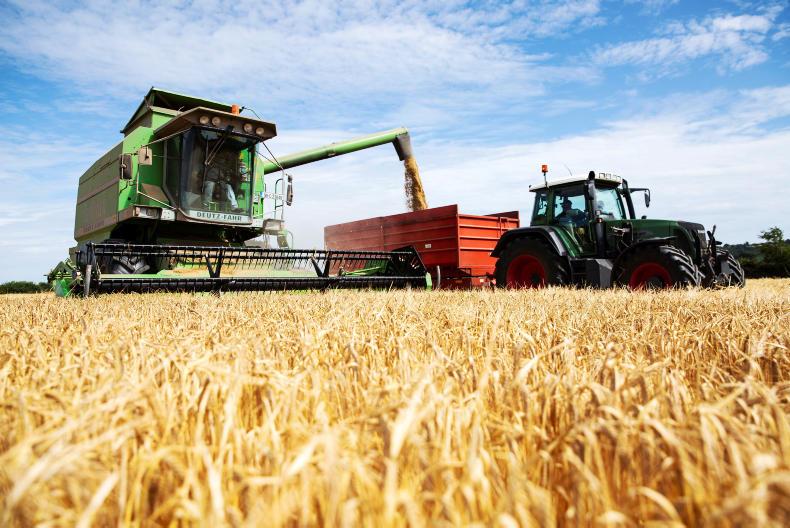The total 2018 cereals harvest comes at 1.8mt, down from 2.3mt last year, and down across the average of the past five years, according to Teagasc's annual harvest report.
This is the smallest recorded harvest since 1995.
The fall in production results from a 4.9% drop in the area sown in the past year, from 271,700ha in 2017 to 258,000ha in 2018.
Meanwhile, weather woes caused below-average cereal yields, between late planting in the spring and drought in the summer.
Grain quality was close to average and straw yields were below average, especially in spring crops, but straw prices increased by 50% to 100%, depending on the area.
2019 recovery
Winter plantings point to strong recovery in production for the coming year, with an extra 27,800ha of cereals estimated to be sown this year.
Winter barley shows the strongest growth, with an additional 17,800ha (+31%).
Winter wheat is up 8,100ha (+15%) and winter oats up 1,900ha (+19%).
Oil and protein seeds
Oilseed rape was the only crop to see sowings increase in 2018, up 14%.
Yields were average, at 4.2t/ha for winter rape and 2.5t/ha for spring rape.
The protein seed area decreased in 2018 due to late planting of spring beans.
Combined with the drought, this led to low yields of under 2.5t/ha.
For the coming year, winter bean plantings are estimated to increase slightly (+5%), while winter rape is stable.
Potatoes
The total potato area declined by 1,000ha (-6%) to 8,175ha in 2018.
After drought conditions caused widespread secondary growth and delayed harvesting, low reported yields are expected to be confirmed in final figures at the end of this month.






 This is a subscriber-only article
This is a subscriber-only article










SHARING OPTIONS: